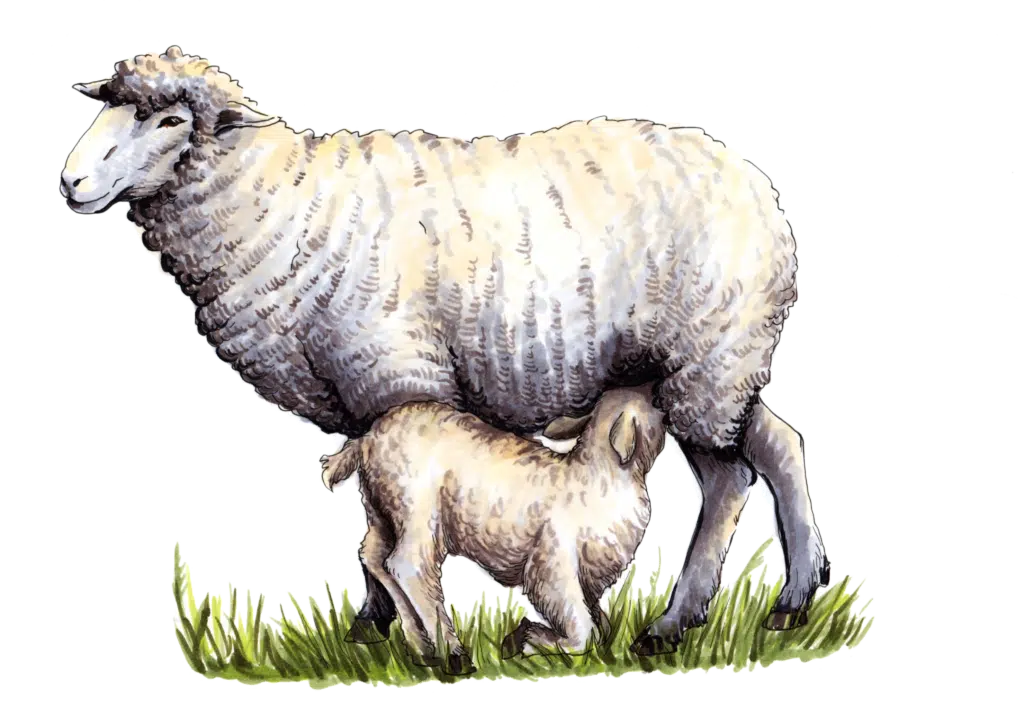Preparing for the lambing season can be both exciting and stressful. The success of a lambing season will not only provide a farmer with an income, but also influence a farm’s financial health. An important aspect of lambing is managing the quality of the colostrum (the ewe’s first milk). This might sound like a difficult task, but once you get the hang of it, it is both easy and useful.
Ensuring the success of colostrum management on a farm is dependent on two factors: (1) having quality colostrum available, and (2) getting it into the newborn lamb.
Having quality colostrum available
Colostrum quality can be influenced by factors such as the ewe’s age, breed, health status, body condition, genetics, and nutrition. Older ewes that have lambed before tend to have colostrum with higher levels of antibodies. The ewe’s body begins to transfer antibodies into the milk two weeks before lambing (colostrogenesis). This process is under hormonal control but can be supported by nutrition. Dietary protein plays the most important role during this time and is vital for lamb growth, mammary gland growth, milk yield, and colostrum quality. Ensuring that a ewe receives a balanced diet with optimal energy and quality protein sources, such as soybean meal, will increase colostrum yield and quality.
Give ewes access to a balanced production lick formulated specifically for pregnant and lactating ewes to avoid under- or overfeeding. Minerals also play a vital role in colostrum quality. Organic selenium will not only ensure increased colostrum yield, but will also transfer into the colostrum for the lambs to drink. This helps to combat white muscle disease. Due to the nature of selenium digestion, only organic selenium will work, as inorganic selenium is needed and used by the ewe to fight oxidative stress. Other minerals such as zinc will support the ewe’s body to produce more antibodies that can be transferred to the colostrum.
Ensuring that the lamb drinks the high-quality colostrum
Antibody content of colostrum and the actual intake of that colostrum. More than 80% of lamb losses occur within the first two weeks of life. These losses are mostly due to starvation, cold, and a lack of sufficient colostrum intake. Colostrum is extremely nutritious and contains high levels of fat (for energy and body heat) and antibodies (for transfer of passive immunity). The ability of a newborn’s gut to absorb these antibodies from colostrum declines by 50% after the first 12 hours of life. It is thus vital to get as much high-quality colostrum into a lamb as quickly as possible. A good rule of thumb is to deliver between 600 mℓ and 850 mℓ of colostrum for a 4,5 kg lamb over the first 24 hours. The lamb should receive four to six feedings during that time. It is always useful to have stored colostrum in the freezer for emergency cases.
Conclusion
You can manage colostrum quality by ensuring that late-pregnant ewes receive a balanced, high-quality lick, and then, ensuring that the lambs drink the high-quality colostrum that the ewes produce. Following these two principles will help you to fight – and win – the battle against lamb losses. Enjoy the lambing season ahead as you see the difference quality colostrum makes!
Download the full article as published in Volume 10, Issue 3 of Wolboer/Wool Farmer. You can also read more about colostrum management for lambs as published on the Agriculture and Horticulture Development Board (AHDB) website.
Anri Strauss is a scientific adviser in the ruminant team at Chemuniqué, holding a master’s degree in nutrition from the University of Pretoria. She grew up on a farm and still lives in the Free State, where she and her husband also farm with Boer goats.










